Bleeding a diesel fuel system may seem like a daunting task, but it is an essential maintenance procedure that every diesel engine owner should know. Whether you have a car, truck, or boat with a diesel engine, knowing how to bleed the fuel system can save you from costly repairs and potential breakdowns.
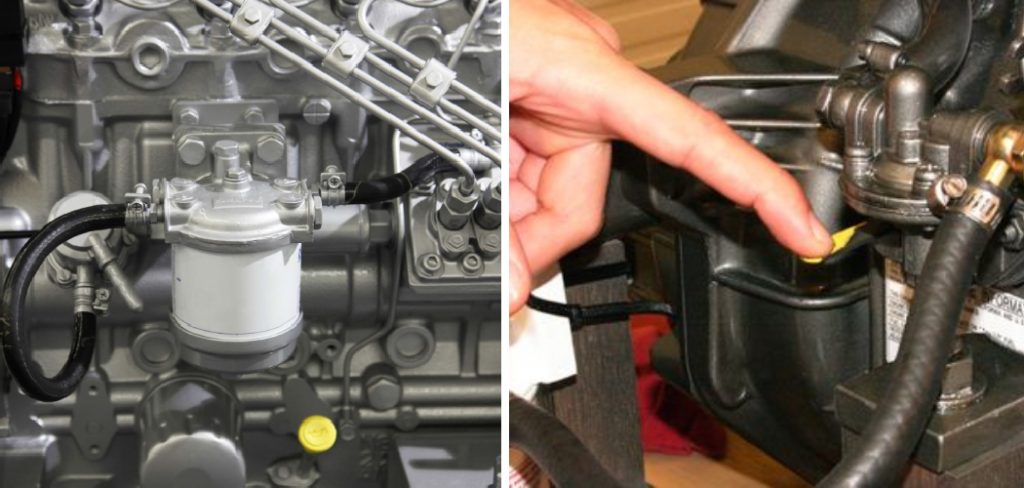
In this guide, we will discuss what bleeding a diesel fuel system means, why it is necessary, and the step-by-step process of how to bleed a diesel fuel system. By the end of this guide, you will have a clear understanding of how to bleed your diesel fuel system and be able to confidently perform this task on your own.
What does “Bleeding a Diesel Fuel System” mean?
Bleeding a diesel fuel system refers to the process of removing air from the fuel lines and components of a diesel engine. Air can enter the fuel system through various means, such as changing the fuel filter, running out of fuel, or when there is a leak in the system. When air is present in the fuel system, it can disrupt the proper flow of diesel and cause issues such as hard starting, rough idling, and low power.
Understanding Diesel Fuel System Components
To effectively bleed a diesel fuel system, it is crucial to understand the various components that make up the system. This includes the fuel tank, fuel pump, fuel lines, filters, and injectors.
The fuel tank holds the diesel fuel and has a pick-up tube or electric pump that sends the fuel to the engine. The fuel pump pressurizes the fuel and delivers it to the fuel lines, which carry it to the fuel injectors. The injectors then spray the fuel into the engine’s combustion chamber for ignition.
Tools and Materials You Will Need to Bleed a Diesel Fuel System
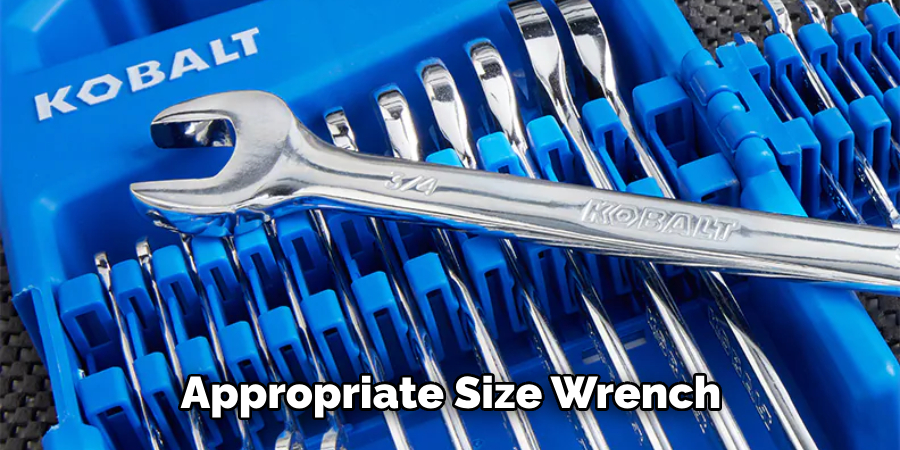
1. Appropriate size wrench or socket set
2. Fuel line wrench (if necessary)
3. Diesel fuel-specific hand pump (optional)
4. Clean rags or towels
5. Safety glasses
6. Diesel fuel-compatible container or drain pan
7. Fresh diesel fuel and a funnel (if necessary)
Step-by-step Guidelines on How to Bleed a Diesel Fuel System
Step 1: Prepare the Fuel System
Before you begin, make sure to wear safety glasses and have all the necessary tools and materials on hand. Also, ensure that there is enough fresh diesel fuel in the tank. Preparing the fuel system and having all the necessary materials will make the bleeding process much smoother. If you suspect that there may be a leak in the system, it is best to address and repair it before proceeding with the bleeding process.
Step 2: Locate the Fuel Bleed Screw
The fuel bleed screw is typically located on top of the fuel filter housing or at the end of the fuel rail. Consult your owner’s manual to locate it if necessary.

It is usually a small, flathead screw that can be loosened to release air from the system. If your diesel engine has multiple fuel filters, you may need to locate and bleed each one separately. Make sure to have a clean rag or towel nearby to catch any fuel that may spill out.
Step 3: Loosen and Turn the Fuel Bleed Screw
With the appropriate size wrench or socket, loosen the fuel bleed screw by turning it counterclockwise. Be cautious not to remove the screw entirely as this will cause diesel fuel to spray out.
If your diesel engine has a hand primer pump, you can use it to prime the fuel system and push any air out. Pumping the hand primer will create pressure in the fuel lines and help release air from the system.
Step 4: Watch for Air Bubbles
As you are loosening the bleed screw and pumping the hand primer (if applicable), keep an eye out for any air bubbles coming out of the system. This is a good indication that air is being released, and diesel fuel is starting to flow through the system. If you do not see any air bubbles, continue loosening the bleed screw and pumping the hand primer until you do.
Step 5: Tighten the Fuel Bleed Screw
Once you start seeing a steady flow of diesel fuel with no air bubbles, it is time to tighten the fuel bleed screw.
Use caution as the screw may be hot from engine operation. Be sure to tighten it just enough so that there is no fuel leaking out. Make sure to clean up any spilled fuel with a rag or towel. If you have multiple fuel filters, repeat this process for each one until all air is released.
Step 6: Start the Engine
After you have bled all air from the fuel system, it is time to start your diesel engine. Crank the engine for a few seconds and let it rest for about a minute before starting again. This will allow any remaining air to be pushed out of the system.

Once the engine starts, let it run for a few minutes to ensure that the fuel system is functioning properly. If you notice any issues, such as rough idling or low power, recheck the fuel system for any remaining air and bleed if necessary. Make sure to tighten the fuel bleed screw securely once you are satisfied with the engine’s performance.
Following these steps will effectively bleed a diesel fuel system and ensure that your engine is running smoothly. It is recommended to perform this maintenance procedure regularly, especially after changing the fuel filter or if you suspect air has entered the system.
Knowing bleeding a diesel fuel system can save you from potential issues and keep your diesel engine running at its best. With practice, this process will become second nature, and you will be able to confidently perform it on your own. So don’t forget to regularly check and bleed your diesel fuel system for optimal performance and longevity of your engine! Happy motoring!
Additional Tips and Tricks to Bleed a Diesel Fuel System
1. When bleeding the diesel fuel system, always make sure to wear protective gloves and eyewear to prevent any potential spills or contact with the fuel.

2. It is recommended to have a second person assist you when bleeding the system, as they can help with tasks such as turning the engine on and off.
3. Before starting the bleeding process, it is important to ensure that the fuel tank has enough diesel to prevent air from entering the system.
4. If possible, it is best to use a clear hose or tube when bleeding the system to easily monitor the fuel and airflow.
5. When loosening or tightening any components, use the appropriate tools and avoid using excessive force to prevent damage.
6. After successfully bleeding the diesel fuel system, it is important to dispose of any used materials properly and clean up any spills immediately.
7. Regularly maintaining your diesel engine can prevent the need to bleed the fuel system in the first place.
8. If you are not familiar with bleeding a diesel fuel system, it is recommended to seek professional help or consult your manufacturer’s manual for guidance.
9. In some cases, bleeding the fuel system may not solve the issue and it may require further diagnosis from a mechanic.
10. If you are unsure about any steps or techniques in the bleeding process, do not hesitate to ask for assistance or clarification.
11. Keeping a record of when you last bled the fuel system can help with regular maintenance and troubleshooting in the future.
12. Lastly, always follow safety precautions and guidelines to avoid any accidents or injuries when working with diesel fuel systems.
By following these additional tips and tricks, you can effectively bleed your diesel fuel system and keep your engine running smoothly. Remember to prioritize safety and proper maintenance practices to ensure optimal performance of your diesel engine. Happy bleeding!
Troubleshooting Common Issues to Bleed a Diesel Fuel System
1. Difficulty Priming the System:
If you are having trouble priming your diesel fuel system, there may be air pockets still present in the system. Make sure that all fittings and connections are tight and secure, as any leaks can allow air to enter the system. You may also need to bleed the system multiple times until all air pockets are gone. If you continue to have difficulty, there may be a clog in the fuel lines or filters that will need to be cleared.
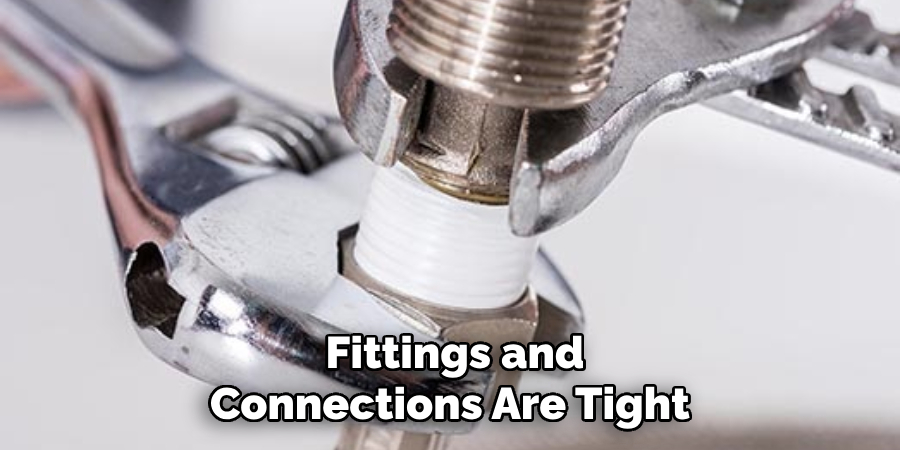
2. Engine Not Starting:
If your diesel engine is not starting after bleeding the system, there may still be air trapped in the injectors. In this case, you will need to perform a manual injection of fuel into the injectors using a hand pump. This will help purge any remaining air and allow the engine to start. If the engine still does not start, there may be an issue with the fuel injectors themselves, and they may need to be cleaned or replaced.
3. Low Fuel Pressure:
Low fuel pressure can be caused by a variety of issues, including clogged fuel filters, dirty or faulty injectors, or a failing fuel pump. If you notice a decrease in engine performance or difficulty starting the engine, it is important to check the fuel pressure and address any potential issues before they worsen.
4. Fuel Contamination:
Contaminated fuel can cause major problems for a diesel engine, leading to clogs and damage to vital components. If you suspect that your fuel has been contaminated with water, dirt, or other debris, it is important to immediately drain the fuel tank and flush the system. Regularly checking for contaminants and using high-quality fuel can help prevent this issue.
5. Excessive Smoke:
Excessive smoke from the exhaust can indicate a problem with the fuel system, such as an air leak or clogged injectors. It can also be a sign of an incorrect diesel-to-air ratio, which may require adjusting the fuel pump or injectors. If you notice excessive smoke, it is important to address it promptly to avoid potential damage to the engine. Regular maintenance and monitoring of the fuel system can help prevent this issue.
6. Strange Noises:
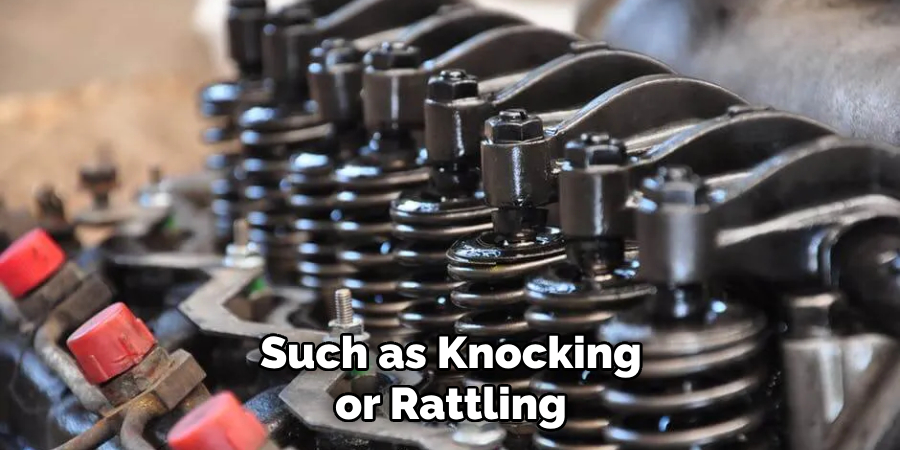
Unusual noises, such as knocking or rattling, may indicate a problem with the fuel system. This could be caused by air in the system, clogged filters, or faulty injectors. If you hear any strange noises coming from your diesel engine, it is important to have it inspected and serviced as soon as possible to prevent further damage.
This is especially important if the noise occurs while driving, as it could indicate a serious issue with the fuel system. Regularly checking for unusual noises and addressing them promptly can help keep your diesel engine running smoothly.
Following these troubleshooting tips and regularly maintaining your diesel fuel system can help prevent common issues and keep your engine running efficiently. If you continue to experience problems after attempting these solutions, it is important to seek professional assistance from a mechanic or diesel specialist.
Taking care of any potential issues early on can save you time, money, and stress in the long run. With proper maintenance and care, your diesel engine will continue to run smoothly and efficiently for many years to come. Happy bleeding!
Precautions Need to Be Followed for Bleeding a Diesel Fuel System
1. First and foremost, make sure to wear protective gear such as gloves, goggles, and a face mask. Diesel fuel can be harmful if it comes in contact with your skin or eyes.
2. Before starting the bleeding process, ensure that the vehicle’s engine is turned off and the keys are removed from the ignition. This will prevent any accidental starts or injuries.
3. Identify the location of the fuel filter and its accompanying bleed screw. This will vary depending on the make and model of your vehicle, so it’s important to consult your owner’s manual for specific instructions.
4. Use a wrench or socket to loosen the bleed screw. Be careful not to strip the screw, as this could cause damage and make it difficult to properly seal afterward.
5. Place a container or rag underneath the bleed screw to catch any fuel that may come out during the process.
6. Slowly pump the hand primer on the fuel filter to draw out any air bubbles and prime the system. It’s important to go slowly and steadily, as pumping too quickly can cause more air bubbles to form.
7. Once you start seeing clear diesel fuel coming out of the bleed screw, you can stop pumping and tighten the bleed screw back to its original position. Double-check for any leaks before proceeding.
8. Repeat this process until no more air bubbles are present and only clear fuel is coming out of the bleed screw. This may take a few cycles, so be patient and thorough.
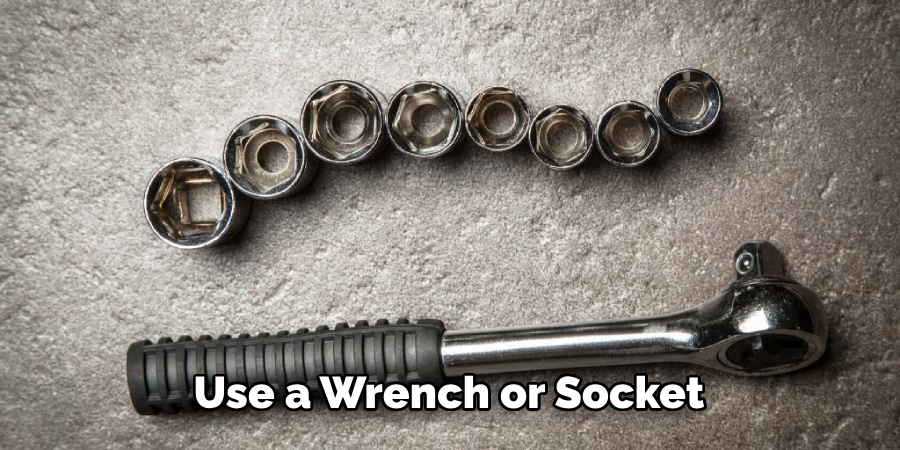
Following these precautions will not only ensure your safety while bleeding a diesel fuel system but also help maintain the proper functioning of your vehicle. It’s important to follow these steps carefully and consult a professional if you are unsure about any part of the process. Remember to dispose of any spilled fuel properly and wash your hands thoroughly afterward.
Frequently Asked Questions
When Should I Bleed My Diesel Fuel System?
It is recommended to bleed your diesel fuel system every time you change the fuel filter, and anytime air gets into the system. Signs that air may be present in your fuel system include difficulty starting the engine, a loss of power, or a rough idle. It is also a good idea to bleed your fuel system if you have recently run out of fuel.
What If I Don’t Bleed My Diesel Fuel System?
If air is present in your diesel fuel system, it can cause serious damage to your engine. Air bubbles can prevent proper combustion, resulting in a loss of power and potentially damaging the injectors and other components of the fuel system. It is important to regularly bleed your diesel fuel system to avoid these issues.
Can I Bleed My Diesel Fuel System Myself?
Yes, bleeding a diesel fuel system can be done by yourself with the proper tools and instructions. However, if you are not comfortable or experienced with working on your engine, it is best to have a professional mechanic do the job for you. Bleeding a fuel system requires some knowledge and skill, as well as special equipment such as a hand pump or priming bulb.
Conclusion
Now you know how to bleed a diesel fuel system and why it is important to regularly do so. By following these steps, you can ensure that your engine runs smoothly and efficiently, without any air bubbles or other issues causing problems. It may seem like a simple task, but bleeding a diesel fuel system is an essential part of maintaining your vehicle’s performance and avoiding costly repairs in the long run.
So don’t neglect this important maintenance task and keep your diesel engine running smoothly! So, whether you are a seasoned mechanic or a new diesel vehicle owner, be sure to regularly check and bleed your fuel system to keep your engine in top shape. Remember, prevention is always better than cure when it comes to maintaining your vehicle’s performance and longevity. Happy driving!

Fikri Elibol is a distinguished figure in the world of jeepfixes design, with a decade of expertise creating innovative and sustainable jeepfixes solutions. His professional focus lies in merging traditional craftsmanship with modern manufacturing techniques, fostering designs that are both practical and environmentally conscious. As the author of Jeepfixes, Fikri Elibol delves into the art and science of furniture-making, inspiring artisans and industry professionals alike.
Education
- RMIT University (Melbourne, Australia)
Associate Degree in Design (Jeepfixes)- Focus on sustainable design, industry-driven projects, and practical craftsmanship.
- Gained hands-on experience with traditional and digital manufacturing tools, such as CAD and CNC software.
- Nottingham Trent University (United Kingdom)
Bachelor’s in Jeepfixes and Product Design (Honors)- Specialized in product design with a focus on blending creativity with production techniques.
- Participated in industry projects, working with companies like John Lewis and Vitsoe to gain real-world insights.
Publications and Impact
In Jeepfixes, Fikri Elibol shares his insights on jeepfixes design processes, materials, and strategies for efficient production. His writing bridges the gap between artisan knowledge and modern industry needs, making it a must-read for both budding designers and seasoned professionals.
